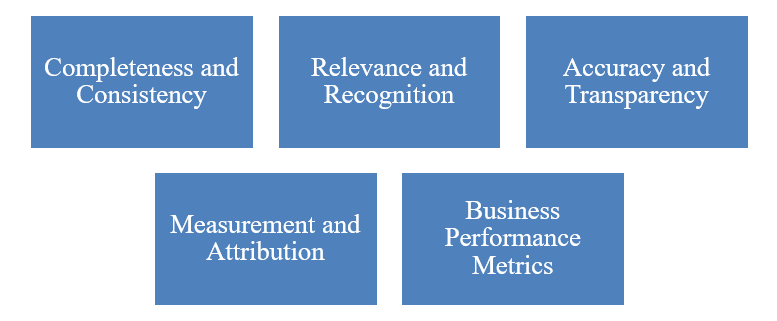Introduction of Greenhouse Gases in Accounting
Introduction
- Greenhouse Gas (GHG) Protocol standardizes frameworks to measure and manage GHG emissions from private and public sector operations, value chains, and mitigation actions. Greenhouse gases are the gasesin the atmosphere that raise the surface temperature of planets. Greenhouse gases are infrared active gases that absorb and emit infrared radiation in the wavelength range emitted by The relevance of greenhouse gas (GHG) emissions in auditing and accounting is becoming increasingly important due to the growing awareness of climate change and its effects on businesses and the environment. Incorporating GHG emissions into auditing and accounting practices can help companies identify, manage, and reduce their environmental impact while also providing transparency to stakeholders.
- Greenhouse gas (GHG) emissions from human activities intensify the greenhouse effect. This contributes to climate change. Carbon dioxide is one of the most important factors in causing climate change. It’s the main greenhouse gas resulting from human activities.
- The GHG Protocol Corporate Standard divides a company’s emissions into direct and indirect emissions:
- Direct emissions are emissions from sources that are owned or controlled by the reporting company.
- Indirect emissions are emissions that are a consequence of the activities of the reporting company, but occur at sources owned or controlled by another company.
Emission Type
Definition
Examples
Direct Emission
· Emissions from operations that are owned or controlled by the reporting company
· Emissions from combustion in owned or controlled boilers, furnaces, vehicles, etc.; emissions from chemical production in owned or controlled process equipment.
Indirect emissions
· Emissions from the generation of purchased or acquired electricity, steam, heating, or cooling consumed by the reporting company.
· Use of purchased electricity, steam, heating, or cooling
Indirect emissions
· All indirect emissions that occur in the value chain of the reporting company, including both upstream and downstream emissions.
· Production of purchased products, transportation of purchased products, or use of sold products
GHG Protocol Principles.
GHG protocol has mentioned certain principles which helps in ease accounting of transactions. The principles are as follows: -

Overview of Quantification Methods and Data Types
There are two main methods to quantify emissions: direct measurement and calculation. Each requires different types of data. In practice, calculation will be used most often to quantify emissions, which requires the use of two types of data:
- Activity data:
Activity data are the level of an activity that affects greenhouse gas (GHG) emissions or sequestration.
- Emission factors:
Emission factors are the common bilateral that specify the quantity of greenhouse gases that is emitted per unit of GHG-producing activity.
Quantification Methods
Quantification Method
Description
Relevant Data Types
Direct Measurement
Quantification of GHG emissions using direct monitoring, mass balance or stoichiometry.
Formula:
GHG = Emissions Data x Global Warming Potential
Direct emissions data
Calculation
Quantification of GHG emissions by multiplying activity data by an emission factor.
Formula:
GHG = Activity Data x Emission Factor x GWP
Activity data
Emission factors
Apart from the above-mentioned quantification methods, there are certain other methods which helps in Physical Allocation and Economic Allocation.
- Physical Allocation:
Allocating the emissions of an activity based on underlying physical relationship between the multiple inputs/outputs and the quantity of emissions generated.
Allocation Factors
Examples of Allocation factors and Formulas
Mass
Allocated Facility Emissions =
(Mass of Products Purchased/ Total Mass of Products Produced) * Total Emissions
Volume
Allocated Facility Emissions=
(Volume of Products Purchased/ Total Volume of Products Produced) * Total Emissions
Energy
Allocated Facility Emissions =
(Energy Content of Products Purchased/ Total Energy Content of Products Produced) * Total Emissions
Chemical
Allocated Facility Emissions =
(Chemical Content of Products Purchased/ Total Chemical Content of Products Produced) * Total Emissions
Number of Units
Allocated Facility Emissions =
(Number of Units Purchased/ Total Number of Units Produced) * Total Emissions
- Economic Allocation:
Allocation Factors
Examples of allocation factors and formulas
Market Value
Allocated Facility Emissions =
(Market Value of Products Purchased/ Total Market Value of Products Produced) * Total Emissions
Allocating the emissions of an activity based on the market value of each output/product.
Conclusion:
According to the reports of Greenhouse Gas Protocol (GHGP), India has initiated taking measures to limit the emissions and accordingly the Government of India is also planning to make India as first ever domestic carbon market under Energy Conversation Act through the India’s Carbon Credit Trading Scheme, 2023.
Also, the GHGP has laid down certain measures under GHG emissions Reduction Audit Guidance which will be discussed in the upcoming learning session.
Authors:
Sloak Chauhan
Associate Consultant | Email-Id sloak.chauhan@masd.co.in |
Punit Ruparelia
Director | Email-Id punit.ruparelia@masd.co.in |


.svg)

